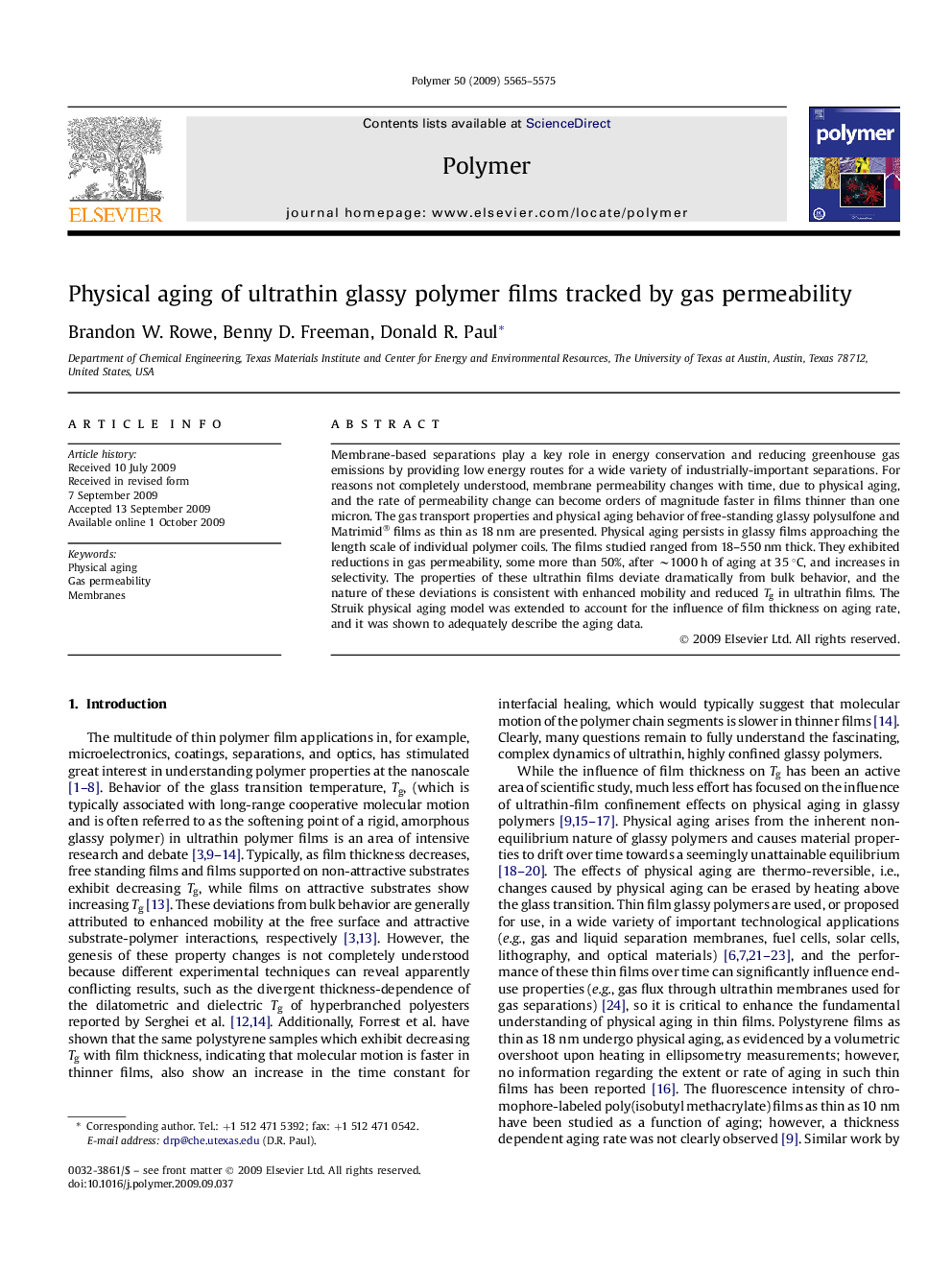| Article ID | Journal | Published Year | Pages | File Type |
|---|---|---|---|---|
| 5185741 | Polymer | 2009 | 11 Pages |
Membrane-based separations play a key role in energy conservation and reducing greenhouse gas emissions by providing low energy routes for a wide variety of industrially-important separations. For reasons not completely understood, membrane permeability changes with time, due to physical aging, and the rate of permeability change can become orders of magnitude faster in films thinner than one micron. The gas transport properties and physical aging behavior of free-standing glassy polysulfone and Matrimid® films as thin as 18 nm are presented. Physical aging persists in glassy films approaching the length scale of individual polymer coils. The films studied ranged from 18-550 nm thick. They exhibited reductions in gas permeability, some more than 50%, after â¼1000 h of aging at 35 °C, and increases in selectivity. The properties of these ultrathin films deviate dramatically from bulk behavior, and the nature of these deviations is consistent with enhanced mobility and reduced Tg in ultrathin films. The Struik physical aging model was extended to account for the influence of film thickness on aging rate, and it was shown to adequately describe the aging data.
Graphical abstractDownload full-size image
